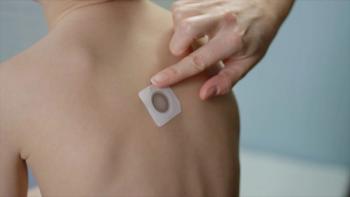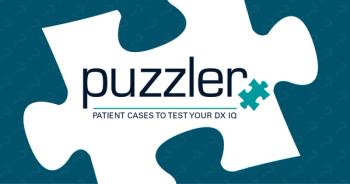
Brown spots on 14-year-old's abdomen and leg are noted
The patient's mother says her child's brown spots have been present since the child was born.
THE CASE
During a sports physical for a healthy 14-year-old girl, a localized area of brown spots on the right side of the abdomen and right leg is noted. The patient's mother says that these spots have been present since the child was born. Although the patient is cleared for sports activities, the implications of the pigmented lesions need to be considered. What's the diagnosis?
DIAGNOSIS: Segmental neurofibromatosis
Pigmented spots are typical of café au lait macules, and together with the unilateral localized freckling in the groin crease (satisfying 2 National Institutes of Health criteria for neurofibromatosis), these findings suggest a diagnosis of segmental neurofibromatosis (SNF1).
PATHOPHYSIOLOGY
Manifestations of SNF1 most commonly include café au lait macules, neurofibromas, or both in a single unilateral segment of the body. Although lesions are usually unilateral, cases with bilateral, symmetrical, or asymmetrical involvement have been reported.4
Patients with SNF1 may be divided into 4 groups based on clinical manifestations: 1) only pigmentary changes; 2) only small cutaneous neurofibromas; 3) both pigmentary changes and small cutaneous neurofibromas; and 4) isolated plexiform neurofibromas.2,5 Some patients with SNF1 have had complications similar to those in classic neurofibromatosis type 1 (NF1), including learning disabilities, optic pathway gliomas, and pseudoarthrosis. Patients with learning difficulties tend to have more extensive cutaneous involvement.2,5
The progression of cutaneous lesions in SNF1 is similar to those in NF1. In both, plexiform neurofibromas and pigmentary lesions may be present at birth or childhood, whereas small cutaneous neurofibromas usually develop during preadolescence or adolescence.4 Although the risk of underlying complications is low, bony defects may be present at birth or may develop during childhood.2 In many patients, lesions are not symptomatic, resulting in a delay in diagnosis.4
Usually, there is no family history of SNF1.4 However, even when lesions are localized, gonadal mosaicism may rarely be present.4 Hence, there may be a small risk of transmission of SNF1 to children. Moreover, individuals with localized skin lesions may have mosaic involvement of other organ systems, so all patients require a careful skin examination and search for extracutaneous findings. For instance, the presence of Lisch nodules should increase the concern for systemic involvement.6
Newsletter
Access practical, evidence-based guidance to support better care for our youngest patients. Join our email list for the latest clinical updates.







